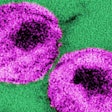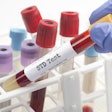
A year-end final rule from the Centers for Medicare and Medicaid Services (CMS) settled a contentious proposal to include nursing degrees in the qualifications for high-complexity testing personnel under Clinical Laboratory Improvement Amendments (CLIA) of 1988 regulations.
The decision to exclude a nursing degree from high-complexity testing personnel qualifications is among the key points outlined in CMS-3326-F, published in the U.S. Federal Register on December 28, 2023, nearly 18 months after the rule was proposed in July 2022.
Portions of the updated regulations (42 CFR 493), which become effective January 27, 2024, with a few exceptions, will cost the clinical laboratory industry about $30 million this year, according to an analysis.
What final rule CMS-3326-F does
1. Increases certain CLIA fees, such as two-part, biennial certificate of accreditation validation survey fees, to support sustainable funding for the CLIA program. Estimates are that approximately half of the certificate of accreditation laboratories will be affected annually.
Other CLIA fee updates affecting certificate of waiver laboratories acknowledge offsetting program obligations to the U.S. Food and Drug Administration (FDA) for its role in categorizing tests and test systems as waived.
New additional CLIA fees will hit laboratories when they have substantiated complaint surveys, unsuccessful performance of proficiency testing (PT), and follow-up surveys for deficiency corrections. CMS estimated that the cost of addressing substantiated complaints is likely to range from $874 on the low side to upward of $32,000 on the high side per incident.
2. Amends histocompatibility and personnel regulations to address obsolete regulations and incorporate technological changes. The new rules mean that labs will need to review and update their policies and procedures.
CMS estimated a one-time burden of five to seven hours per laboratory and a cost to the industry of $19 million to $27 million, plus costs to update policies and procedures related to histocompatibility and ensure that clinical lab directors meet on-site requirements. The Clinical Laboratory Improvement Advisory Committee (CLIAC) had recommended that lab directors make at least two reasonably paced on-site visits to each laboratory they direct annually.
3. Allows CMS discretion in imposing alternative sanctions, such as civil money penalties, plans of correction, and on-site state monitoring, for certificate of waiver laboratories, rather than only being able to impose principal sanctions such as revocation, suspension, and limitation of the CLIA certificate. Only "simple" CLIA-waived tests and procedures can be performed by a laboratory with a certificate of waiver, and these laboratories have not been subject to routine inspections (surveys) under the CLIA program.
"This regulatory change could decrease the burden for sanctions imposed for improper proficiency testing referral," CMS said in the final rule. PT is the testing of unknown samples sent to a laboratory by an HHS-approved PT program to check the laboratory's ability to determine the correct testing results.
CLIA standards roll up a range of considerations from CMS which issues laboratory certificates and standards and enforces regulatory compliance; the Centers for Disease Control and Prevention (CDC) which plays a major role in quality, technical standards, and contributes practice guidelines; and the FDA, which plays another key role in developing rules and guidance around text complexity.
In a January 2 blog post, the American Hospital Association (AHA) applauded the decision not to include nursing degrees as a means to qualify high-complexity testing personnel. The AHA said the change would weaken the CLIA program’s high regulatory standards. The American Society for Clinical Pathology (ASCP) called the proposed change a "quantum leap" that would disregard patient health. CMS said that it received over 20,000 mostly duplicated form-letter comments in opposition.



















